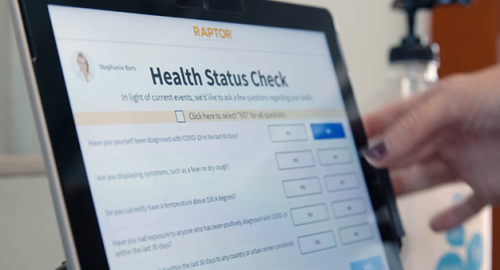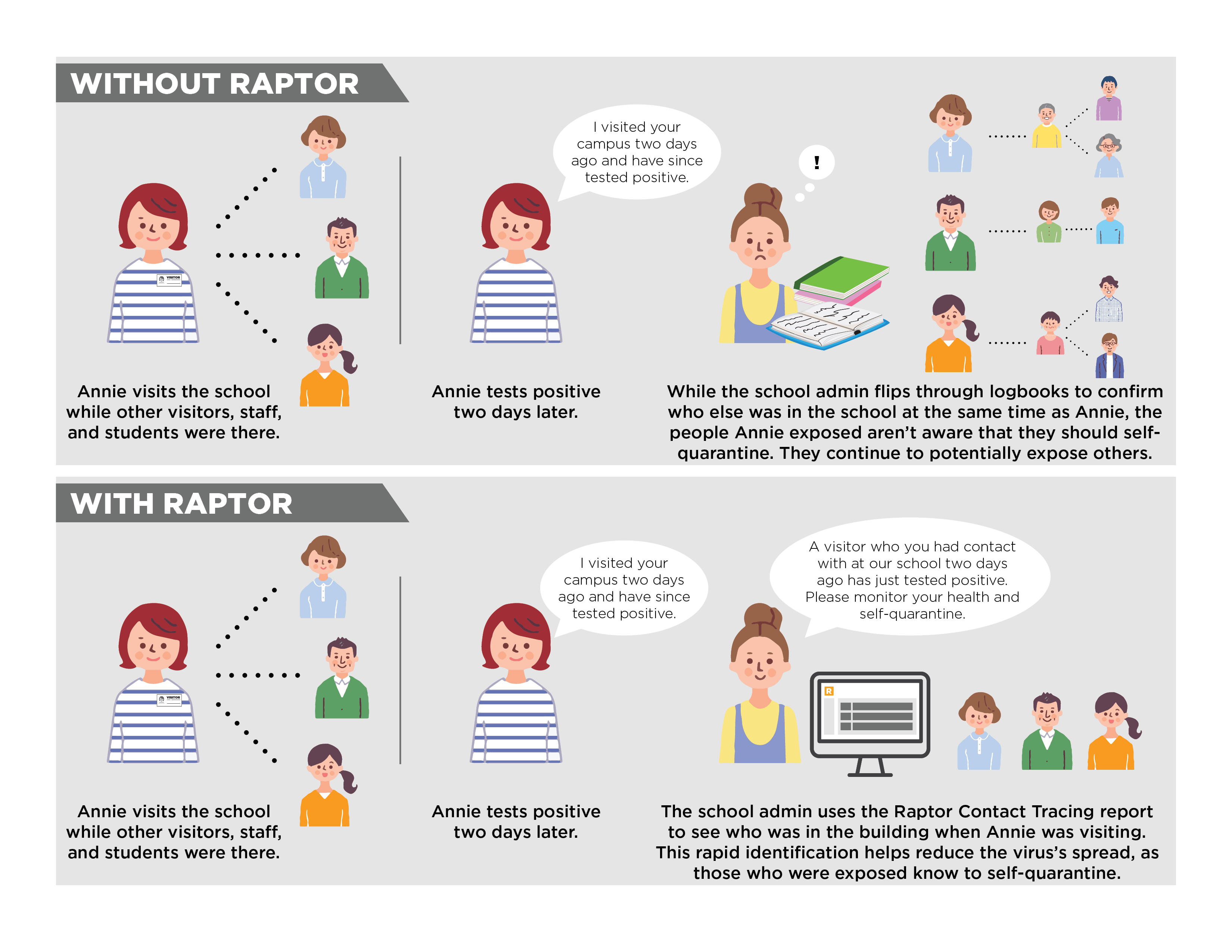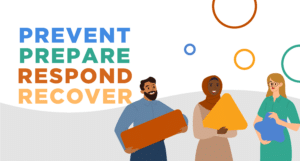Schools, especially those who have limited visitation or have moved to remote learning models, may question why they should switch from paper and pencil logbooks to a visitor management system during the pandemic. A robust visitor management system includes screening visitors for sex offender status and custody alerts as well as helping keep your school community safe from COVID-19. Leveraging a visitor management system will continue to help keep your schools safe and be a critical component to your school security approach long after the pandemic ends.
Below are three key reasons schools across the nation have decided to implement Raptor Visitor Management during the pandemic.
1. Student, staff, and visitor screening helps limit exposure
Keeping people with COVID-19 exposure risk out your buildings is necessary to reduce the virus’s spread. To determine if an individual presents a risk, schools should screen each person who comes into their building with COVID-19-specific questions. Facilitating the screening, recording the results, and determining the action (to come into the school or not) can quickly become challenging without a streamlined process.
The CDC recommends schools take a home-based strategy, which involves remotely screening students before they even leave their homes each day. This strategy relies on the students guardian to identify if the student has symptoms and take the appropriate action. With Raptor, students guardians receive a daily questionnaire that can be quickly answered on a mobile device or computer and automatically recommend if the student should stay home based on their answers. Raptor enhances this approach by also enabling staff to remotely screen at home.
For students and staff who did not complete the remote screening, they can be prompted to complete a quick on-site questionnaire when they sign into the system at school. Administrators are instantly notified if someone fails the on-site screening or if someone who has failed the remote screening attempts to sign in.
Schools should also screen every visitor to determine the visitors exposure risk. This can be accomplished by adding a custom list of COVID-19-specific screening questions to the check-in process. Raptor can immediately notify the appropriate personnel should a visitor be identified as a potential risk or if someone with known exposure attempts to check in to a building. As of December 2020, Raptor has screened over 425,700 visitors through our COVID-19 health screening.
The system can also limit your contact with visitors, students, and staff as they check into your school through many contactless configurations including self-service kiosks. All the data from these screenings is captured, displayed, and reported so school administrators can quickly see results, create robust reports, and have the visibility needed to make decisions and take appropriate actions.
Ultimately, students, staff, and visitors who are deemed exposure risks are kept out of your school.
2. Robust reporting facilitates contact tracing to keep everyone in your community safe
Although school visitation may be limited, even if one person enters your building whether that be a contractor to perform a deep clean or a guardian who needs to drop off a forgotten lunch schools must track that visit and record the visitors information. It’s also imperative that schools track staff and students as they enter and leave the building. Knowing precisely who is on campus and when is necessary to facilitate contact tracing. Contact tracing, per the CDC, is a crucial strategy to stop COVID-19’s transmission by informing those that may have been exposed so they can monitor their health, get tested, and self-isolate.
In their Interim Guidance for Case Investigation and Contact Tracing in K-12 Schools, the CDC explains why K-12 schools should be prepared for an outbreak and the importance of having an efficient means to contact trace.
Rapid identification of exposed individuals and the ability to efficiently and confidentially share relevant information is of utmost importance.
Contact tracing requires prompt action because the faster schools can alert others that they were exposed, the faster they can help reduce the virus’s spread. Handwritten sign-in logs are clearly not designed to address the detailed gathering of visitor data necessary to initiate sound contact tracing efforts. Raptor Visitor Management tracks and records every individual using the system to sign in, which can include their contact information and when exactly they were in your school. These details are available in a downloadable report, giving you instant access to the information you need to effectively and promptly contact trace should a person who visited your school subsequently test positive, which has happened to nearly 50% of those who responded to a recent Raptor survey.
This rapid identification and ability to inform others that they were potentially exposed to an infected individual helps stop the virus from spreading to anyone else.
3. Implementing now means you’ll be ready when you fully reopen.
Visitor management systems are a core component of school safety, yet a significant number of schools still rely on handwritten visitor logs to document and track school visitors, volunteers, and contractors. These handwritten logs are not enough to keep unwanted individuals out.
Raptor Visitor Management eliminates uncertainty. The system screens for sex offenders, alerts staff of custody issues, provides district-wide reporting for all visitors, volunteers, and contractors, and integrates with the Raptor K-12 integrated safety platform to give you full line of sight to everyone and every incident in your schools. Raptor also syncs with your SIS, enables you to track student tardies and early dismissals, and ensure you’re releasing students to only approved guardians.
Many schools are leveraging this time, while they don’t have as many people on site during COVID-19, to implement Raptor and develop their policies, including how they will screen visitors, students, and staff or what action they will take if there is a positive case in the school.
Developing these critical policies, making sure your staff is trained in these policies, and implementing Raptor will help you be prepared when your school fully reopens.
How?
When you partner with Raptor, you join a community of over 34,000 schools who are facing similar challenges to yours. Raptor shares the best practices and lessons we have learned from our nearly 20 years of implementation experience. These best practices include everything from how a school can respond to a confirmed sex offender match to what steps to take if a visitor fails the on-site COVID screening.
Raptor has successfully implemented Raptor Visitor Management at hundreds of schools during COVID-19. One such example is Broward County, a Florida district with over 250 campuses and thousands of staff to train, in which Raptor implemented the solution 100% remotely within weeks. Read their story here.
To learn more, contact us today to set up a personalized demo.






